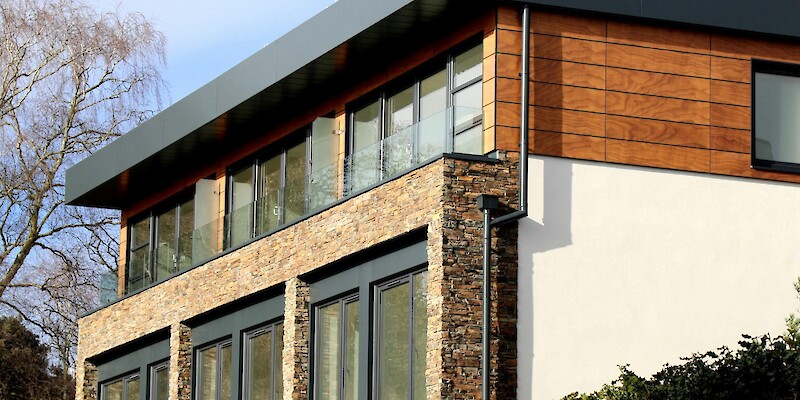What do mortgage lenders class as a ‘new build’?
Most mortgage providers consider a ‘new build’ to be a property that has been constructed or significantly refurbished within the past two years and has not been sold during that time. Securing a mortgage for such properties is generally no more complex than for other types of homes, although certain situations may call for expert guidance.
The process can become more complicated when purchasing a new build property ‘off-plan’—that is, before construction is complete or has even started. In these cases, the number of available lenders and mortgage products may be more limited. It is strongly recommended to consult with a mortgage broker prior to submitting a finance application.
Eligibility criteria for new build mortgages
Eligibility criteria for mortgages on newly built properties can, at times, be more rigorous than for older homes, though this is not always the case. Below are some key conditions that certain lenders may apply when assessing mortgage applications for new build properties:
Property type: The type of property you are purchasing—whether a new build house or flat—can influence the mortgage options available to you. Mortgages for new build flats can be more challenging to obtain, and some lenders limit the loan-to-value (LTV) ratio to between 60% and 85%.
Deposit requirements: While some lenders will approve a mortgage for a new build house with a minimum 5% deposit, new build flats typically require a higher deposit, averaging around 15%, due to the reduced LTV limits.
Warranty cover: Lenders usually require confirmation that the property is protected by a recognised structural warranty, such as the NHBC Buildmark, which offers 10 years of cover for construction quality. You can verify the property's warranty status via the NHBC website.
Credit history: Applicants with a poor credit record can still be approved for a new build mortgage. However, more severe credit issues, including bankruptcies, repossessions, or recent credit problems, may pose additional challenges and reduce the likelihood of approval.
How much your mortgage will cost
You can work out what the monthly and overall repayments will be on a new build mortgage using our calculator below. Simply enter the amount you need to borrow, along with an interest rate, term length and repayment type to get some quick results.
Schemes you could apply for
There are several schemes designed to support borrowers in securing a mortgage for a new build property. While many are targeted at first-time buyers, a range of options is available to suit different borrower profiles:
Mortgage Guarantee Scheme: Backed by the government, this scheme is intended for those with a deposit of between 5% and 9%. It is open to both first-time buyers and homemovers, and can be used for either new build or older properties.
First Homes: Tailored for first-time buyers and key workers, this scheme offers discounts of 30% to 50% on the purchase price of new build homes. It is limited to properties valued at £250,000 or less (£420,000 or less in London) and is available to households earning £80,000 or less (£90,000 in London).
Deposit Unlock: Introduced by the Home Builders Federation, this initiative enables buyers to secure a new build home with just a 5% deposit. It is available on selected developments and open to both first-time buyers and homemovers, although eligibility depends on participation from specific housebuilders and lenders.
Scottish Shared Equity Schemes: In Scotland, alternative schemes such as the New Supply Shared Equity (NSSE) and Open Market Shared Equity (OMSE) offer support for new build purchases. These are tailored to help eligible buyers get on the property ladder through shared equity arrangements.
For further details, speak to a mortgage broker.
Available lenders and interest rates
Mortgage interest rates for new build properties can sometimes be marginally higher, as lenders may view these properties as a greater risk. This stems from the uncertainty over whether the lender would be able to recover the full loan amount in the event of repossession and subsequent resale.
Without a track record or established market value, lenders cannot be certain that the property will appreciate sufficiently over time to cover the outstanding balance.
While most mortgage providers are open to lending on new build properties, the number of options available to you will depend largely on the loan-to-value (LTV) ratio and whether you are purchasing a house or a flat. Generally, lenders are more cautious with new build flats, which can further limit the range of mortgage products on offer.
The tables below show the number of accessible lenders based on these variables:
Houses & bungalows
This tables shows the number of lenders for new build houses and bungalows:
|
Loan-to-Value Ratio |
Number of Lenders Available (Approx) |
| 95% | 16 |
| 90% | 45 |
| 85% | 63 |
| 80% | 69 |
| 75% | 74 |
Flats & maisonettes
This tables shows the number of lenders for new build flats and maisonettes:
| Loan-to-Value Ratio | Number of Lenders Available (Approx) |
| 95% | 7 |
| 90% | 15 |
| 85% | 31 |
| 80% | 51 |
| 75% | 65 |
| 70% | 67 |
| 65% | 69 |
| 60% | 71 |
New build buy-to-let mortgages
Obtaining a mortgage on a new build property intended for buy-to-let purposes is certainly possible, though it often involves more challenges than financing an older property. This is primarily because there is no established rental history, making the expected income less predictable for lenders.
Additional concerns from some lenders include the possibility of the property decreasing in value once it is tenanted. Buying off-plan can introduce further complexity, as potential construction delays may defer the start of rental income, increasing the perceived risk.
Moreover, interest rates and deposit requirements are generally higher for buy-to-let mortgages. However, there are lenders who offer competitive terms on new build buy-to-let mortgages with relatively few conditions. Engaging a mortgage broker is recommended, as they can help identify lenders willing to support your investment plans and exclude those who do not consider this type of application.
Pros and cons of new build properties
If you are applying for a mortgage to buy a new build home, it’s a good idea to research the advantages and disadvantages of this property type. The table below summarises them:
|
Advantages |
Disadvantages |
| Usually in better condition than older properties and need less maintenance and repairs in the first few years of purchase | Rates and deposit requirements can sometimes be slightly higher |
| Generally more energy efficient | Delays can be costly if you are buying the property off-plan |
| Housebuilder warranties cover minor repairs for a set period | New builds can be more expensive than comparable older properties |
| No chain on the purchase side can mean a swifter completion with fewer delays | More difficult to get approved for a mortgage on certain property types, such as buy-to-let and flats |
Frequently Asked Questions
Mortgage offers are generally valid for six months, but for new build properties, it’s not uncommon to receive a longer one, of anywhere between nine and 12 months. This is to cater for borrowers who are buying off-plan and may run into delays.
If your mortgage offer is set to expire, it is possible to apply for an extension but this will only be granted at the lender’s digression. If your lender declines, things can get complicated and costly, and there is a possibility that you might have to re-apply for a mortgage from scratch.
















